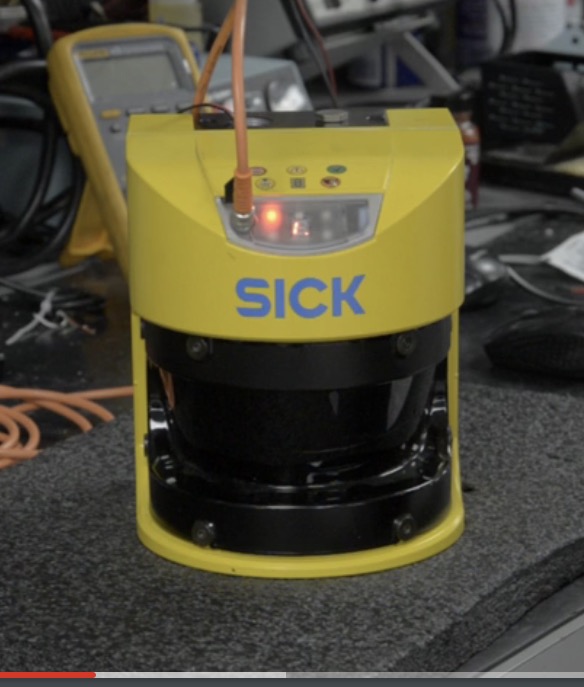A big problem America faced in the manufacturing boom that was the late 19th, early 20th century was worker safety. Machines were more often than not a labyrinthine tangle of cogs, whirring motors, endless belts and spinning gears. If a worker was not careful, a piece of clothing or even a limb would get caught in the mechanisms resulting in injury or death. Unfortunately, before real reform took place within our government these types of accidents ran rampant. Sometime in the mid-20th century, worker safety was given some priority and by 1971 OSHA – Occupational Safety and Health Organization – was formed. These days machines are required to have some type of safeguard to prevent a worker from making contact with any dangerous moving parts. Some are physical barriers, which prevent a worker from accessing the area altogether but in some cases the application may require intermittent access to the work space. This is where electronic safety equipment comes in to play with devices that create the ability to automatically shut down a machine or part of a process if an object (such as a worker’s hand) passes into an undesired area.
Two of the types we see for repair in the service center, are Area Scanners and Light Curtains.
Area Scanners
These are devices that electrically map out an area and shut the machine down if a foreign object enters it. They are usually programmable and can be made to cover large areas. They are used extensively in robotics as they can efficiently cover a broader space and serve to guard against a robot arm’s wide range of motion. The basics of how such a scanner works is that within the device a series of lasers are fired against a spinning mirror which deflects the beams through a lens and across an area. The device then detects and measures these beams to get specific area vectors. These vectors are then programmed into the device. Any object that breaks these preprogrammed vectors create a fault event which is then sent to a PLC which turns off the desired process. The main failures we correct on scanners in the service center are:
- Lens Replacement – Often times something (either physical damage or contamination) will cause the lens to be faulty. It is necessary for the lens to be intact because the laser beams must be able to pass through it in order for the scanner to function.
- Motor Repair – Within the scanner is a small DC motor which causes the mirrors to spin. This motor experiences the same failure modes as other motors such as bearings, winding failure etc. and must be repaired or replaced.
- OBE – On Board Electronics from the main power, control or drive PCBs within the device all can experience normal component level failure such as capacitors, resistors, diodes, transistors etc.
Light Curtains
These are sometimes referred to as light bars. They are electrical devices that are usually comprised of three basic components: A control box, a transmitter and a receiver. The control box sends a signal to the transmitter which fires a beam – such as infrared – of light to a series of sensors within the receiver. The receiver then sends a signal back to the control box telling it whether or not the beams where received fully. If any object breaks this loop of transmit and receive the control box will send a command signal for the machine to be shut down or a process stopped. The main failures we correct on light curtains in the service center are:
- Contaminations or intrusion damage within the light curtain connections. Each light curtain has a series of wired connections, and these opening present a way for water or dust to enter the light curtains housing. This will create a blocked beam behind the lens and result in a failure. The lens must be carefully removed and cleaned or replaced if damaged.
- Connector damage from excessive vibration or mechanical movement. Sometimes a set of light bars will be mounted on a machine what moves or vibrates. The problem here is that over time as the connector pins are under constant movement the metal becomes weak and either can break or lose electrical connections. In this case we will either replace the pins or rework the whole connector. Sometimes it will be necessary to replace the connector housing or rubber seals entirely.
- Dead laser diodes or sensors – Often times with age, heat or general wear, the laser diodes within a light transmitter will go bad and must be replace. The same is the case with sensors within a receiver assembly.
- Control box repair – As with any device with many incoming and outgoing I/O signals, light curtain control boxes suffer from component level failure from time to time. Each has a power supply board and a control board, which can have any number of components become faulty.

